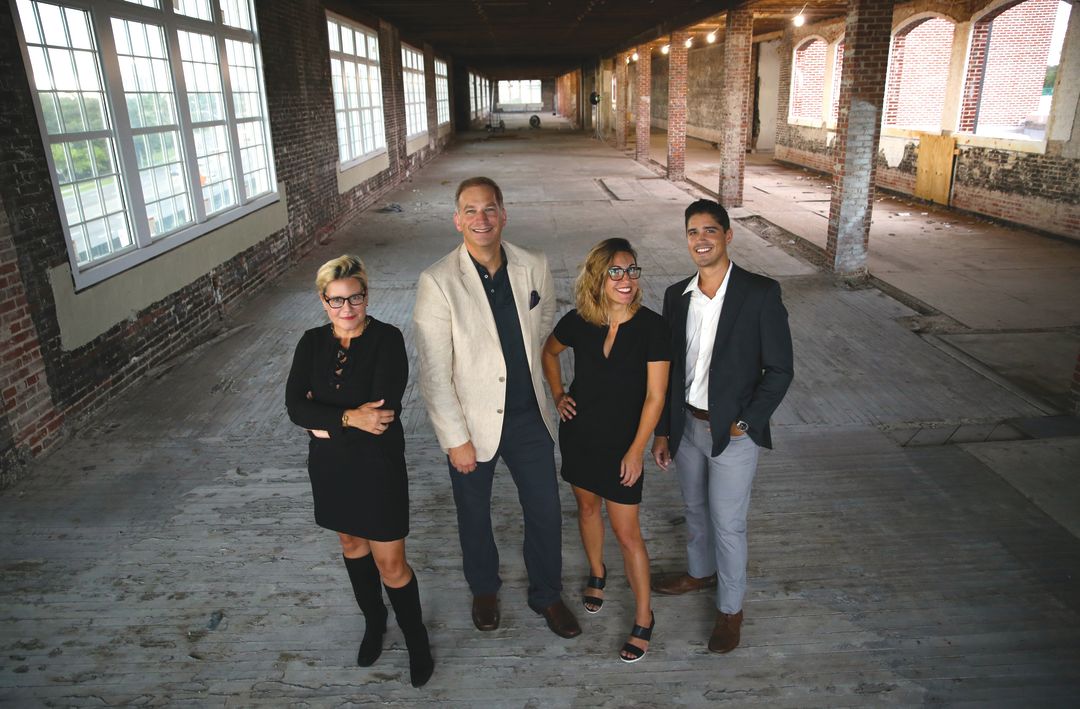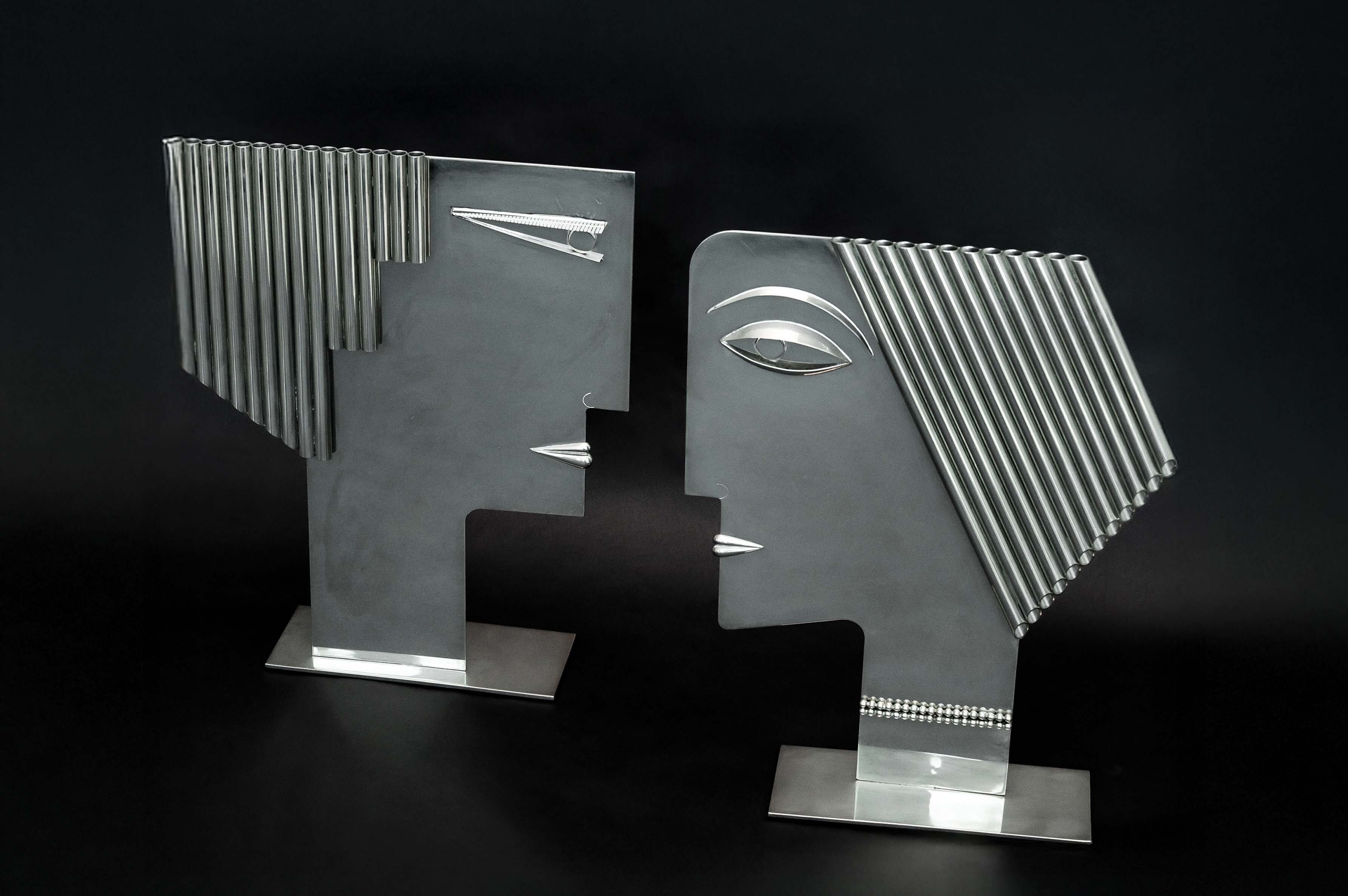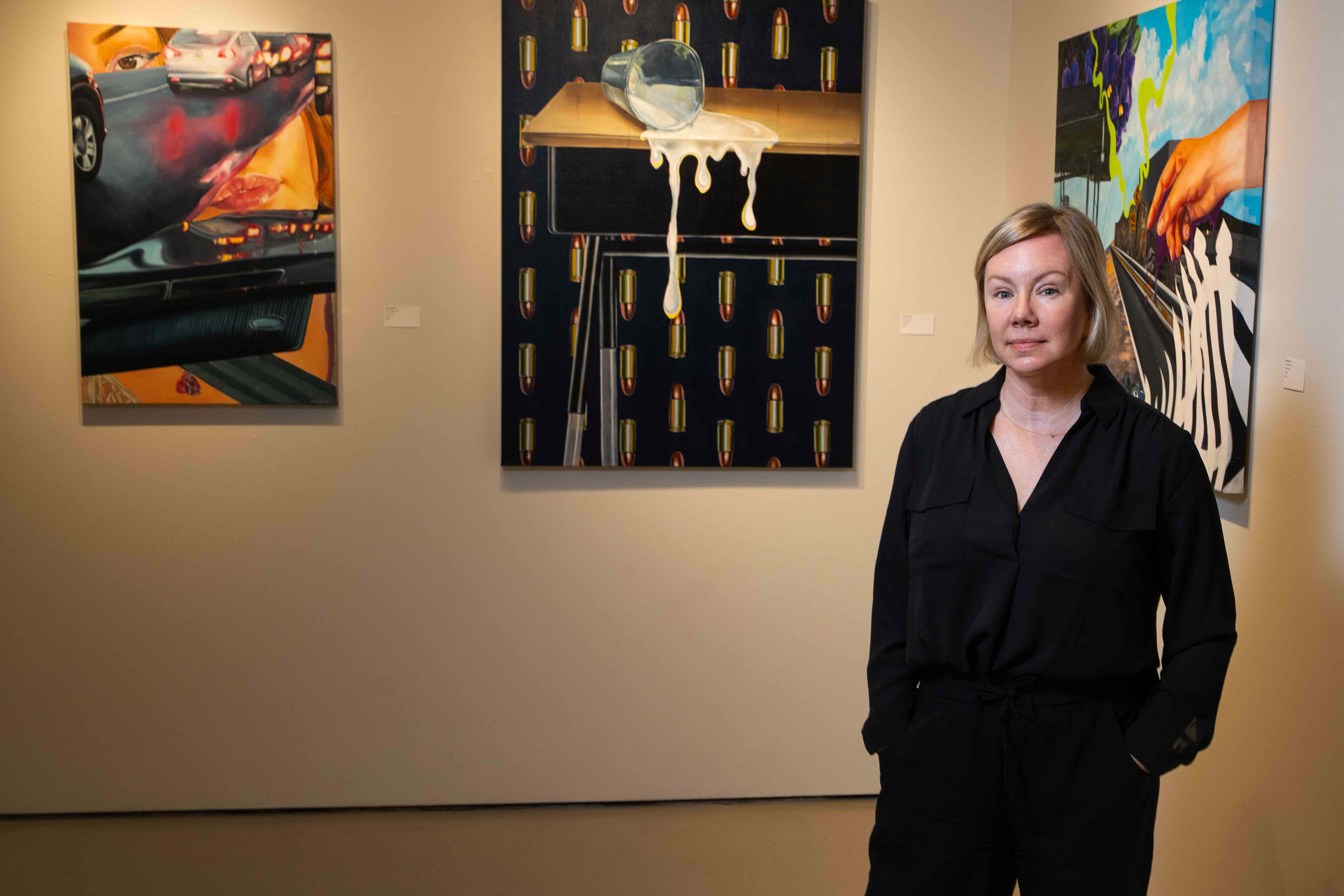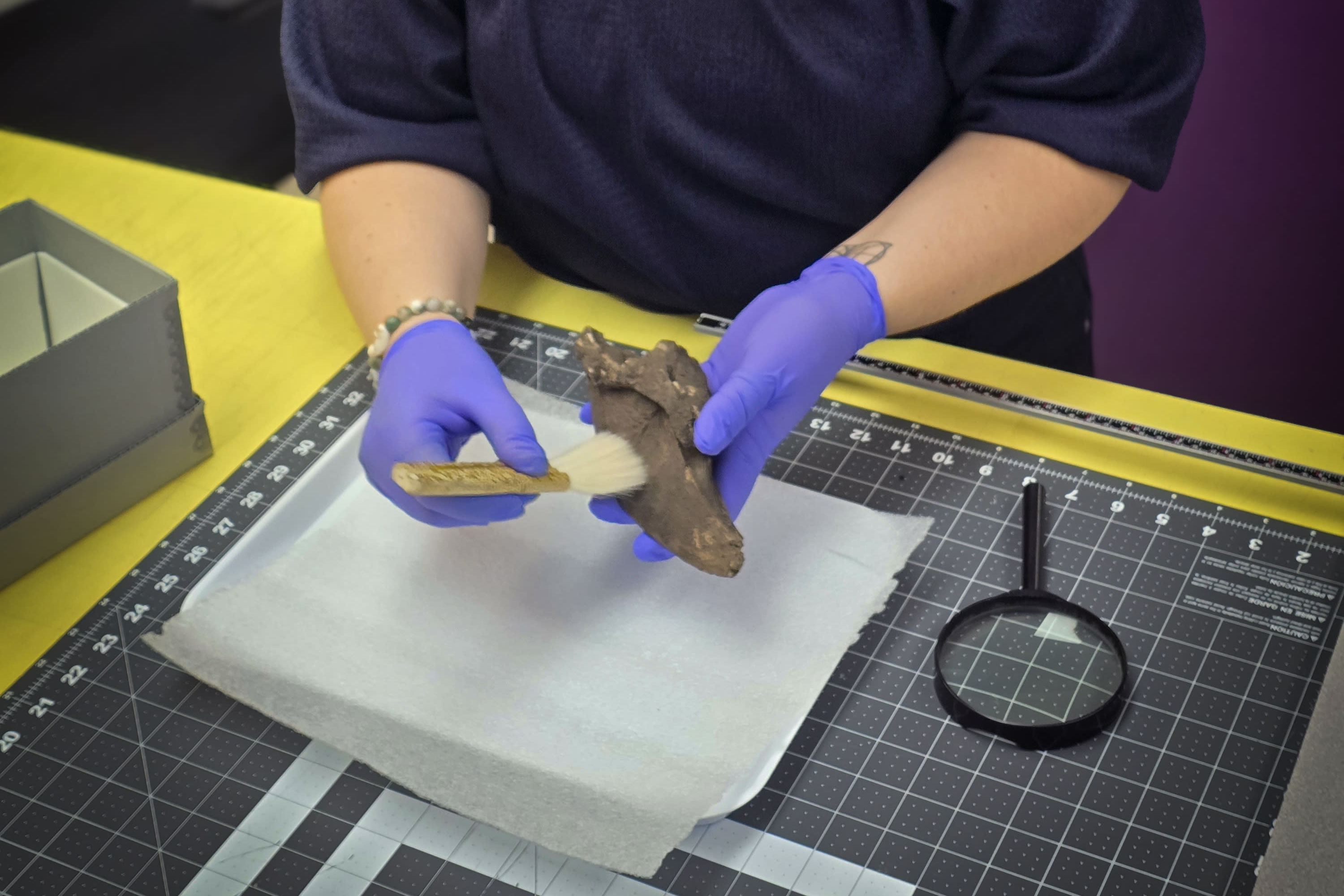The Evolving Plans for the Sarasota Museum of Art

The museum team: Anne-Marie Russell, executive director and chief curator; Daniel Eck, deputy director for operations; Christa Molinaro, exhibitions manager; Rae Ramos, public programs.
Image: Rich Schineller
Anne-Marie Russell, executive director of the Sarasota Museum of Art, set to open in January 2019, is a woman on a mission.
She is overseeing construction of the three-building Ringling College Museum Campus, which is being leased by Ringling College from the Sarasota County school district, and now includes the original three-story Gothic revival Sarasota High School structure on Tamiami Trail, a second 20,000-square-foot former classroom building just east of it, and the former Vision Works store immediately to the north, which has been nicknamed “The Works.” The buildings are being repurposed as gallery space for year-round rotating exhibits, a café, museum store, classrooms for the Ringling College Lifelong Learning Academy and art-making studios for the college’s own public classes.
At the same time, Russell is assembling an administrative team and developing future exhibits. “It’s one thing to maintain an institution, quite another to build one from scratch,” says Russell. “It’s unbelievably exciting, [but] not for the faint of heart.”
What’s happening right now on the museum campus?
In July we started Phase 2, the new construction. Phase 1 was demolition and stabilization of the original building. We now have a mini-campus, so we went back and master planned it. [The idea was] ‘We’ve got three buildings and a lot of green space, we need to think of this contextually.’
We’re building the team. Our new deputy director for operations, Daniel Eck, was president of Lakeland College in Sheboygan, Wisconsin. Christa Molinaro, our exhibitions manager, came to us from the Whitney Museum; and Rae Ramos is in charge of our educational programming. Construction and move-in should wrap up late 2018; there will be a grand opening gala in January 2019.
With the expanded campus, has the philosophy behind the museum changed?
A.. It’s still a contemporary Kunsthalle [a non-collecting museum]; that hasn’t changed. We won’t have a permanent collection. The only change has been the expanded scale of the campus. We’ve added 20,000 interior square feet and 60,000 exterior square feet.
The highest priority was carving out the best possible art museum exhibition/gallery space. It’s been expanded by 20 percent to 15,000 square feet and moved to two-thirds of the second floor and two-thirds of the third floor. That allowed for the highest ceilings, the best light. A central courtyard, a great indoor-outdoor public space, will link the two buildings. We’re calling it The Plaza. On the first floor of the old building, the historic center lobby will be the reception area and retail. On each wing are classrooms and the auditorium, which will accommodate approximately 110 to 120 people.
How are you keeping people engaged?
This fall, we’ll do six or seven programs and about the same in the spring, primarily in The Works building, which seats 70. They range from a meet-and-greet to learn more about the museum to formal lectures, symposia and [other] events. We’ve partnered with Mote on an art and science series, the Center for Architecture Sarasota and the Sarasota Architectural Foundation, the Ringling Museum and also the Hermitage Artist Retreat.
How have programing plans evolved since you arrived here in 2015?
I spent the first year doing intensive research to learn everything I could about Sarasota, so we could develop not a generic program but one that connects to our community, and connects our community to the world.
Our focus is on the late modern period to contemporary. We’ll have exhibitions curated in-house and/or with guest curators from around the world, and we’ll collaborate with other institutions to create exhibitions that will travel between those institutions.
And what have you learned about Sarasota?
It’s unbelievably diverse, but that diversity is not immediately apparent. There are so many rich histories, cultures and traditions that connect Sarasota to the world and vice versa, which provides so much rich programmatic opportunity.
The wide range of very high-quality arts offerings, whether it’s opera, symphony, theater—there’s a real hunger for globally significant art that will match the stature of the other organizations. Sarasota has a world-renowned architectural heritage and we will certainly be building on that robust history. Having an encyclopedic museum in town, we will work with The Ringling to expand on its contemporary offerings.
Can you share anything about the opening exhibition?
Museums keep these things tightly under wraps, so I can’t share anything until the appropriate time. [But] museum exhibitions take three to five years in development and we have a dozen in development for the first three years, a balance between solo and thematic group exhibitions. We’re not a teaching museum; that’s a different model. [But] the opportunity to reflect on the different art and design disciplines at the college is a natural cue to how we’re going to program. I’ll give you a hint: color.



